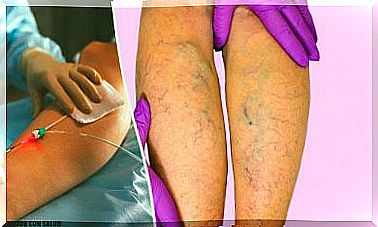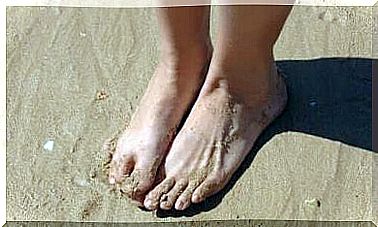The Causes Of Acanthosis Nigricans
Skin changes are the only signs of acanthosis nigricans. You will find that the skin in the folds of the body becomes dark, thick, and velvety.

Acanthosis nigricans is a skin disease that is characterized by dark areas of skin with velvety changes in color in the folds of the skin. At the same time, the affected skin can also become thicker. In most cases, the armpits, groin, and neck are affected.
Acanthosis nigricans skin changes are common in people who are overweight or have diabetes. Also, children with this disease are at higher risk of developing type 2 diabetes.
In rare cases, acanthosis nigricans can be a warning sign of a cancerous tumor in an internal organ such as the stomach or liver.
There are no specific treatments for this disease. However, treatment can restore the affected areas of skin to normal color and texture.
Symptoms of acanthosis nigricans

Skin changes are the only signs of this disease. Darker, thicker, and more velvety skin can be seen in the folds of the body. These symptoms usually appear in the armpits, groin and neck.
Most of the time, the skin changes appear slowly. At the same time, the affected area can smell or sting.
See your doctor if you notice any changes on your skin, especially if they appear suddenly. You could have an undiagnosed condition that needs treatment.
The causes of acanthosis nigricans
Acanthosis nigricans has been linked to the following causes:
Insulin resistance
Many people who have acanthosis nigricans are also resistant to insulin. This hormone is secreted by the pancreas and ensures that the body can process sugar. Insulin resistance is ultimately the cause of type 2 diabetes.
Acanthosis nigricans and hormonal disorders
Acanthosis nigricans often occurs in people who have hormonal imbalances. For example, ovarian cysts, an underactive thyroid or problems with the adrenal glands.
Certain medications and supplements
High doses of niacin, birth control pills, prednisone, and other corticosteroids can cause acanthosis.
Cancer and Acanthosis nigricans
Acanthosis nigricans can also occur with lymphoma or when a cancerous tumor begins to grow in an internal organ such as the stomach, colon, or liver.
Risk factors
The risk factors for acanthosis nigricans are:
- Obesity: The higher your weight, the higher the risk of developing this disease
- Origin: Studies show acanthosis nigricans is more common in the United States
- Family history: some types of acanthosis nigricans appear to run in families.
The diagnosis of acanthosis nigricans
Dermatologists usually do a skin test to check for acanthosis nigricans. In rare cases, a specialist will take a small sample of skin for a biopsy and send it to a laboratory for analysis.
If the cause is unclear, your doctor may recommend doing blood tests, x-rays, or other tests. The purpose of these exams is to look for possible undiagnosed causes.
Treatment of acanthosis nigricans

In many cases, treating the underlying problem can help resolve the color changes. Some examples can be the following:
- Lose weight. If acanthosis nigricans is caused by obesity, weight loss may help.
- Withdrawal from medication or nutritional supplements. If the condition appears to be related to medication or supplements, your doctor may suggest that you stop it.
- Have an operation. If the cause is a cancerous growth, surgical removal of the tumor usually causes the changed skin color to go away.
How to improve the appearance of the skin
If you are concerned about the appearance of your skin, your lesions become uncomfortable, or start to smell bad, your doctor may recommend the following:
- Prescription creams to lighten the affected areas.
- Use antibacterial soaps – but be careful, as friction can make the condition worse.
- Topical antibiotics
- Taking medication for acne
- Laser therapy for thinning the skin
Tests and examinations
Your doctor can usually diagnose acanthosis by looking at your skin. In rare cases, a skin biopsy may be necessary. If there’s no clear cause, your doctor may order more tests. These can include:
- Blood tests to check blood sugar or insulin levels
- Endoscopy as a diagnostic method
- X-rays









